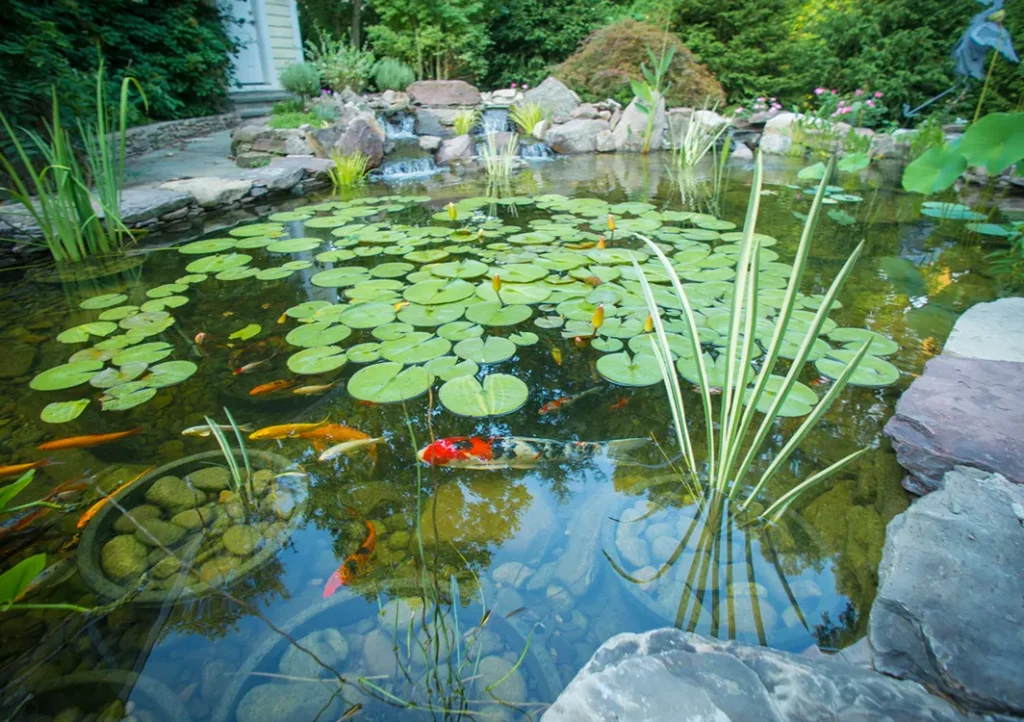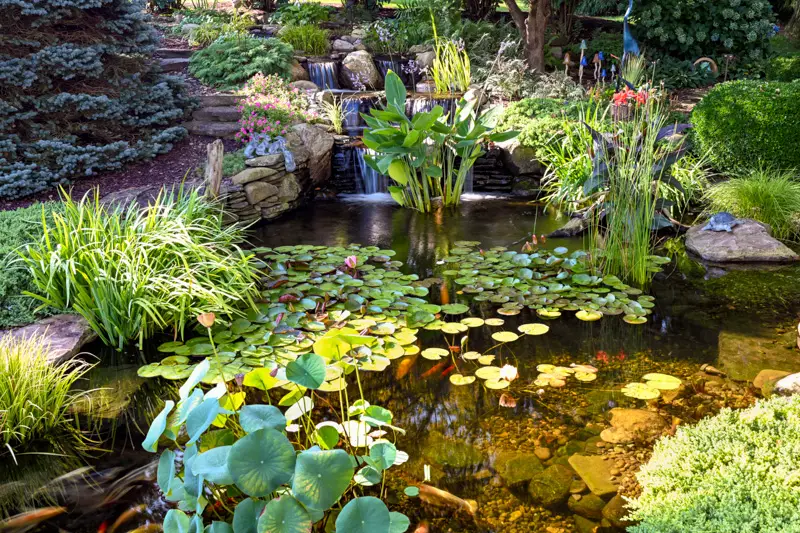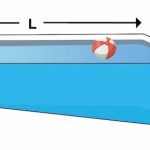Having a pond in your backyard can be a beautiful addition to your landscape, but maintaining clear water can be a challenge. Murky or cloudy pond water can not only be unsightly but can also be harmful to the aquatic life living in your pond. In this comprehensive guide, we will explore various methods and tips on how to keep your pond water clear and healthy.
1. Proper Filtration System
One of the most important factors in maintaining clear pond water is having a proper filtration system in place. A good filtration system helps remove debris, excess nutrients, and other pollutants from the water, keeping it clean and clear.
There are several types of filtration systems available, including mechanical, biological, and UV filters. Mechanical filters remove physical debris, biological filters break down organic waste, and UV filters kill algae and harmful bacteria.

Credit: www.coolponds.net
2. Regular Cleaning
Regular cleaning of your pond is essential to prevent the build-up of algae, debris, and other contaminants that can cloud the water. Remove leaves, twigs, and other debris from the surface of the water regularly to maintain water clarity.
It is also important to clean the pond’s filter regularly to ensure it is functioning efficiently. A clogged filter can reduce its effectiveness and lead to cloudy water.
3. Proper Aeration
Adequate aeration is crucial for maintaining clear pond water. Aeration helps oxygenate the water, which is essential for the health of fish and other aquatic life. It also helps prevent the build-up of harmful gases and algae that can cloud the water.
You can use aeration devices such as air pumps, fountains, or waterfalls to increase oxygen levels in your pond. These devices not only improve water quality but also add a decorative element to your pond.
4. Balance Nutrients
Excess nutrients in the water can lead to algae blooms and cloudy water. To keep pond water clear, it is important to maintain a balance of nutrients in the water. Avoid overfeeding fish, as uneaten food can decompose and release nutrients into the water.
You can also add aquatic plants to your pond, such as water lilies and submerged plants, which can help absorb excess nutrients and prevent algae growth. These plants not only add beauty to your pond but also contribute to its overall health.
5. Use Beneficial Bacteria
Beneficial bacteria play a vital role in maintaining clear pond water by breaking down organic waste and reducing nutrient levels in the water. Adding beneficial bacteria to your pond can help establish a healthy ecosystem and prevent the build-up of algae and other contaminants.
You can find beneficial bacteria products specifically designed for ponds at garden centers or online retailers. Follow the manufacturer’s instructions for dosing and application to ensure effective results.
6. Avoid Overstocking
Overstocking your pond with fish can lead to excess waste and nutrients in the water, resulting in cloudy water and poor water quality. To prevent overcrowding, make sure to limit the number of fish in your pond based on its size and filtration capacity.
Monitor the fish population regularly and consider relocating some fish to another pond if necessary. By maintaining a balanced fish population, you can help keep your pond water clear and healthy.
7. Control Sunlight Exposure
Excessive sunlight exposure can promote the growth of algae in your pond, leading to cloudy water and imbalanced ecosystem. To prevent algae blooms, consider adding shade-providing plants or installing a shade sail over your pond to reduce direct sunlight exposure.
You can also strategically place your pond in a location that receives partial sunlight to minimize algae growth while still allowing aquatic plants to thrive. By controlling sunlight exposure, you can help maintain clear water in your pond.

Credit: charlottebackyardponds.com
8. Test Water Quality
Regularly testing the water quality of your pond is essential for maintaining clear and healthy water. Water testing kits are available at garden centers or online and can help you monitor pH levels, ammonia, nitrate, and other important parameters.
By testing the water regularly, you can identify any imbalances or issues early on and take corrective measures to prevent water clarity problems. Maintaining proper water quality is key to ensuring a thriving ecosystem in your pond.
9. Use Barley Straw
Barley straw is a natural and effective way to keep pond water clear and free of algae. When barley straw decomposes in water, it releases compounds that inhibit the growth of algae, preventing the water from becoming cloudy.
You can place barley straw bundles in your pond or use barley straw extract to achieve the same effect. Barley straw is safe for fish and other aquatic life and provides a chemical-free solution for maintaining clear pond water.
10. Consider Adding a Water Clarifier
If despite your best efforts, your pond water remains cloudy, you can consider adding a water clarifier to help restore water clarity. Water clarifiers work by clumping together tiny particles in the water, making it easier for the filter to remove them.
Water clarifiers are safe for fish and plants and are available in liquid or tablet form. Follow the manufacturer’s instructions for dosing and application to effectively clear up your pond water.
Conclusion
Maintaining clear pond water is essential for the health and beauty of your pond ecosystem. By following the tips and methods outlined in this guide, you can ensure that your pond water remains clean, clear, and healthy for fish, plants, and other aquatic life.
Remember to invest in a good filtration system, practice regular cleaning, maintain proper aeration, balance nutrients, use beneficial bacteria, avoid overstocking, control sunlight exposure, test water quality, use barley straw, and consider water clarifiers if needed. With proper care and maintenance, you can enjoy a crystal-clear pond that enhances the beauty of your outdoor space.





